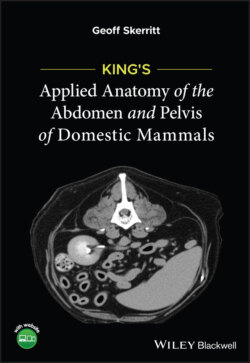Читать книгу King's Applied Anatomy of the Abdomen and Pelvis of Domestic Mammals - Geoff Skerritt - Страница 35
2 Gastrointestinal Function 2.1 Introduction
ОглавлениеIn simple life forms, e.g. unicellular organisms such as the amoeba, food particles are ingested by a process of active envelopment with the resulting formation of a food vacuole within the cytoplasm. In higher orders of animal life this process plays no significant part in the process of digestion, although it is retained by macrophage cells in certain cellular activities such as phagocytosis, the ingestion or engulfing of particulate matter. Macrophages are a type of white blood cell found mainly in connective tissue and blood.
The development of the digestive tract involves cell specialisation occurring within the different regions of the tract and in relation to the functions of these different regions. Thus, while certain cells are specialised for absorbing food in a suitably processed form, other cells are primarily protective in function or are associated with transportation and with pre‐ treatment of the food to allow its utilisation. Further specialisation has evolved in relation to the nature of the food, so that marked variations occur in the gastrointestinal anatomy in herbivores as compared to carnivores. In general, however, the tract of higher vertebrates is divided into distinct anatomical regions, namely the buccal cavity, oesophagus, stomach, small intestines, large intestines and rectum. Further subdivisions of these regions are present.
